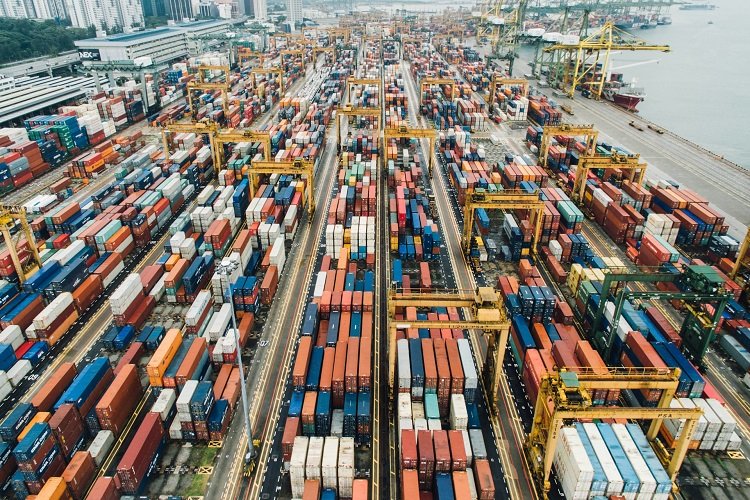
Key Documentation in Import-Export: What You Need and Why It Matters
Author:White Fox Corporation
Published on:Mar 18 2025
The global import-export business is growing rapidly, with millions of transactions happening every day. However, international trade can be tricky, especially with paperwork.
Missing or wrong documents can lead to delays, fines, or lost goods. It’s crucial to have all the right documents prepared.
In this blog, we will list the key documents needed for export and import services and explain why they are important. Understanding essential documents like the bill of lading and customs declarations will save you time, reduce costs, and help you avoid legal problems.
The Basics of Import-Export Documentation
What Is Import-Export Documentation?
Import-export documentation consists of various papers that help move goods between countries. These documents are essential for smooth transactions and show that trade rules are followed.
Role of Import-Export Documentation:
-
It helps trade by keeping a legal record of transactions.
-
It makes sure that trade follows national and international laws.
-
It protects buyers and sellers from possible disputes.
Key Players Involved:
-
Importers and Exporters: Responsible for preparing and submitting required documents.
-
Customs Authorities: Verify documentation and assess duties.
-
Freight Forwarders: Assist in documentation and logistics.
-
Logistics Providers: Handle the transportation and manage paperwork related to shipments.
Why Documentation is Crucial in International Trade
Good documentation is not just a rule, it is essential for global trade. It helps with following the law, reducing risks, and improving efficiency.
-
Legal Compliance: Ensures that all regulations are followed, minimizing the risk of fines and penalties.
-
Risk Mitigation: Reduces the chances of disagreements, lost goods, or legal issues arising from incorrect documentation.
-
Efficient Process: Helps in customs clearance and shipping processes, reducing delays and associated costs.
Key Documents in the Import-Export Process
1. Bill of Lading (B/L)
What It Is:
A contract between the exporter and the shipping company confirms that the shipping company has received the goods. It shows that the carrier will transport the shipment to its destination.
Types:
-
Straight Bill of Lading: Non-transferable, used when the recipient is identified.
-
Order Bill of Lading: Transferable, allowing the buyer to take possession of goods.
Why It Matters:
-
Legal Proof of Shipment: Confirms ownership and the condition of goods during transit.
-
Claims for Damage: Essential when filing claims for lost or damaged goods.
2. Commercial Invoice
What It Is:
A bill issued by the seller to the buyer, detailing the goods sold and their value. It acts as a proof of transaction and is essential for customs clearance.
Why It Matters:
-
Transaction Record: Documents the sale and provides legal evidence.
-
Customs Requirement: Facilitates duty and tax assessment.
-
Invoice Details: Must include product descriptions, quantities, prices, and terms of sale.
3. Packing List
What It Is:
A document that provides a detailed breakdown of the shipment's contents, including item descriptions, quantities, and packaging details.
Why It Matters:
-
Customs and Inspection: Verifies shipment compliance with regulations.
-
Handling and Storage: Helps manage the cargo efficiently.
-
Inventory Check: Useful for both the exporter and importer to verify the shipment.
4. Certificate of Origin
What It Is:
A document that certifies the country where the goods were manufactured or produced.
Why It Matters:
-
Tariff and Duty Determination: Affects customs duties and taxes.
-
Trade Agreements: Important for products included in special trade agreements.
5. Customs Declaration
What It Is:
A formal statement submitted to customs authorities detailing the nature, value, and classification of goods being imported or exported.
Why It Matters:
-
Legal Compliance: Required by customs authorities to assess duties.
-
Prevents Smuggling: Ensures that prohibited or restricted goods are not moved across borders.
6. Insurance Certificate
What It Is:
A document confirming that the shipment is insured against potential risks during transit.
Why It Matters:
-
Risk Protection: Mitigates financial losses in case of damage or loss.
-
Lender Requirement: Proof of insurance may be required when financing goods.
7. Import/Export License
What It Is:
Government-issued permission to import or export specific goods, particularly those that are restricted or regulated.
Why It Matters:
-
Legal Authorization: Ensures compliance with trade control laws.
-
Regulatory Compliance: Avoids legal issues related to restricted items.
Common Issues Arising from Documentation Mistakes
1. Delays in Customs Clearance
Cause:
Missing or wrong documents can lead to long customs checks and delays in clearance.
Impact:
-
Financial Loss: Incur additional charges like storage and demurrage fees.
-
Business Disruption: Missed deadlines can harm customer relationships and reduce profitability.
2. Penalties and Fines
Cause:
Submitting inaccurate or fraudulent documents can result in severe legal consequences.
Impact:
-
Costly Penalties: Non-compliance or underreporting value may result in heavy fines.
-
Loss of Reputation: Repeated violations can harm the credibility of businesses.
3. Cargo Seizures or Forfeiture
Cause:
Incomplete forms, wrong classifications, or missing licenses can result in goods being taken away.
Impact:
-
Loss of Goods: Seized shipments are often forfeited without compensation.
-
Legal Challenges: Importers/exporters may face prosecution for illegal practices.
Also Read - https://whitefoxcorporation.com/blog/the-benefits-of-partnering-with-a-reliable-import-export-company/
Best Practices for Managing Import-Export Documentation
1. Stay Updated with Regulations
Why It Matters:
Regulatory requirements change frequently, influenced by trade agreements and global policies.
Actionable Tips:
-
Subscribe to trade newsletters for updates.
-
Attend workshops and training sessions.
-
Work with customs brokers who stay current with regulations.
2. Use Digital Tools and Software
Why It Matters:
Manual processes increase the risk of errors, while digital solutions enhance accuracy and efficiency.
Actionable Tips:
-
Implement import-export management software.
-
Use standardized templates to streamline document creation.
-
Maintain a centralized digital archive for easy access and tracking.
3. Train Your Team
Why It Matters:
Lack of knowledge about required documents and procedures is a primary cause of errors.
Actionable Tips:
-
Conduct regular training sessions for staff handling documentation.
-
Create a guidebook outlining each document's purpose and requirements.
4. Maintain Accurate Records
Why It Matters:
Proper record-keeping helps in audits, legal disputes, and efficient document retrieval.
Actionable Tips:
-
Store both digital and physical copies of essential documents.
-
Use file-naming conventions for easy document retrieval.
-
Conduct regular audits to ensure records are complete and accurate.
Conclusion
Good documentation is essential for smooth and legal trade in import-export. Key documents like the Bill of Lading and Certificate of Origin help goods cross borders without problems.
When businesses keep their documentation accurate, they can prevent costly delays and fines, making their import-export process easier and more reliable.
Let Whitefox Corporation be your trusted partner in import-export management. Contact us today to get started and experience the difference that professional documentation can make!


